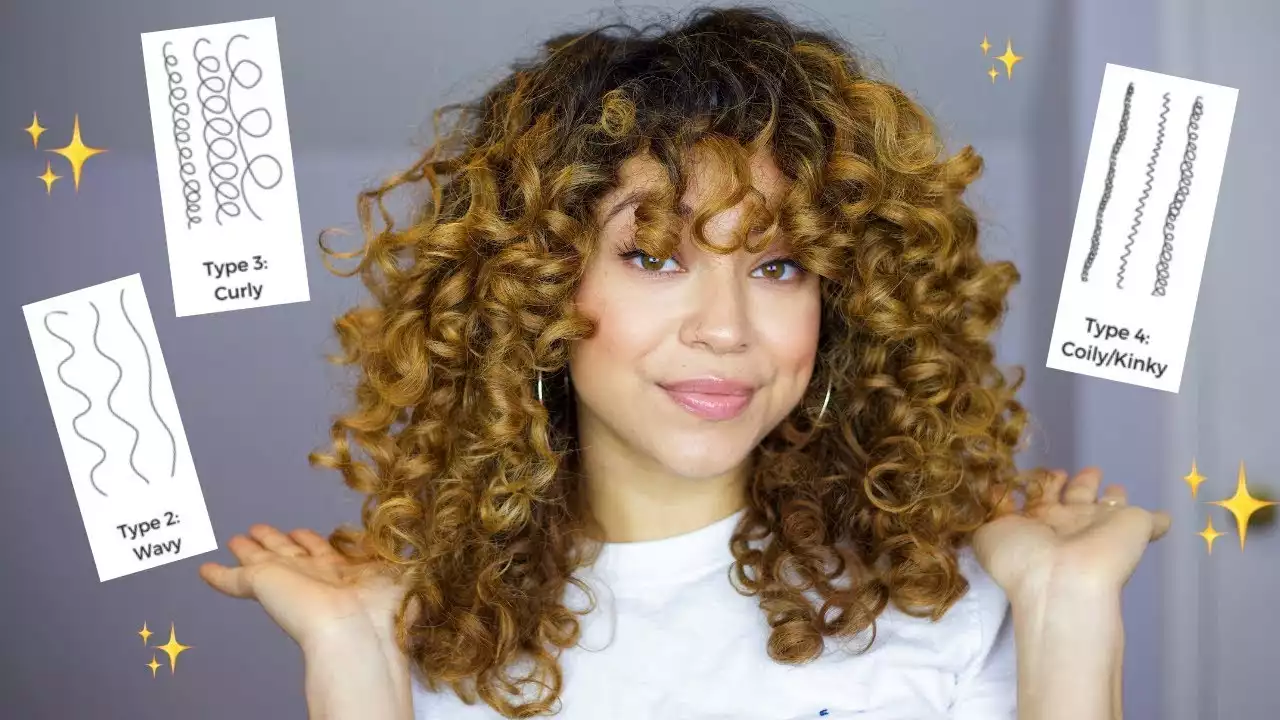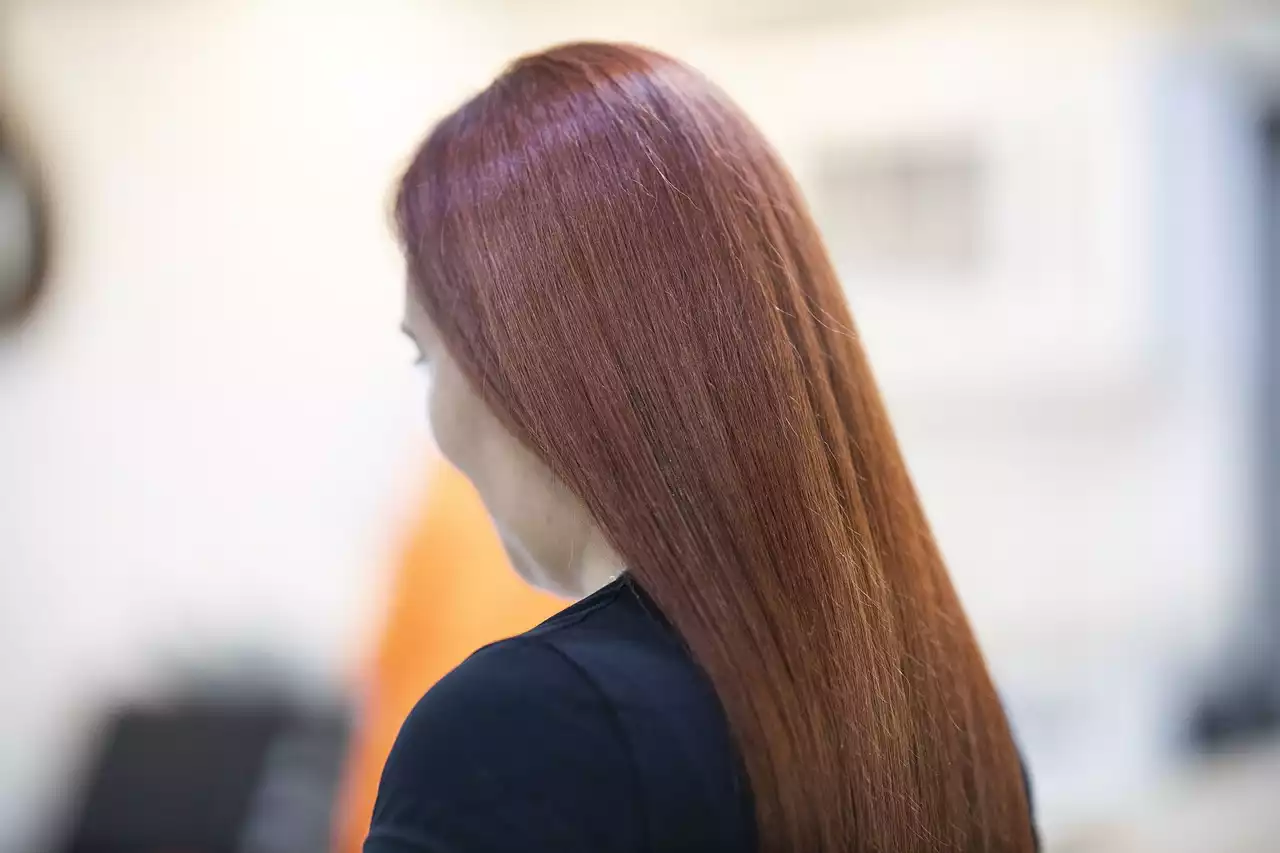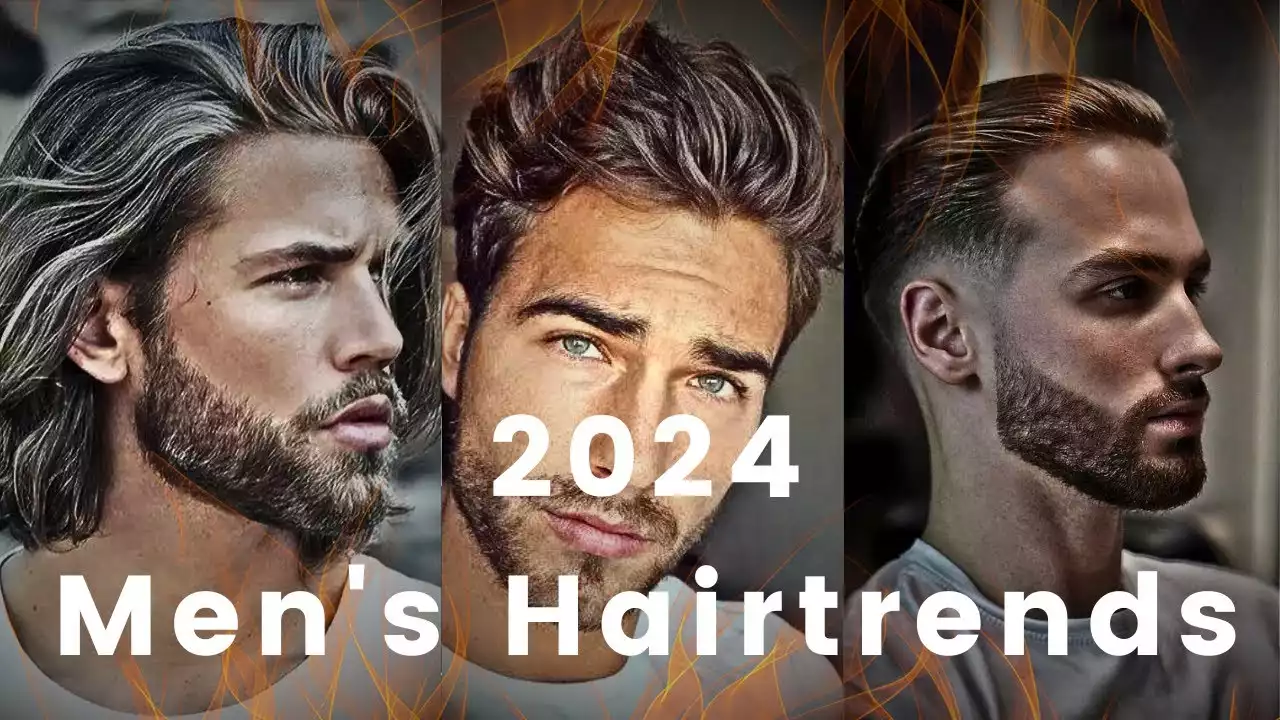Understanding curly hair types
Find Your Curl Type!
Curly hair is a beautiful and diverse hair type that comes in various patterns and textures. Understanding your specific curl type is crucial in order to properly care for and style your curls. There are generally four main categories of curly hair: wavy, curly, coily, and kinky. Within each category, there are subcategories that further define the curl pattern. Let's take a closer look at each type:
Wavy hair often has loose, S-shaped curls that are not as tightly coiled as other curl types. This hair type is typically easy to manage and can range from a slight wave to more defined curls. Wavy hair is prone to frizz and may require products that enhance and define the natural wave pattern.
Curly hair has tighter and more defined curls than wavy hair. It can range from loose ringlets to corkscrew-like curls. This hair type tends to be more prone to frizz and may require additional moisture to maintain its shape and definition. Products that provide hydration and frizz control are essential for managing curly hair.
Coily hair, also known as Afro-textured hair, has tight curls that form a distinct coil pattern. This hair type is prone to dryness and shrinkage, meaning it may appear shorter than it actually is. Coily hair requires intense hydration and moisture to maintain its shape and prevent breakage. Products that provide moisture and help with detangling are essential for managing coily hair.
Kinky hair is the tightest and most coiled hair type. It has a dense, zig-zag pattern and often requires extra care and attention to maintain its health and shape. Kinky hair can be fragile and prone to breakage, so gentle handling and moisturizing products are crucial. Deep conditioning treatments and protective styling can help keep kinky hair healthy and manageable.
Understanding your curl type is the first step in embracing and caring for your natural hair. It allows you to choose the right products and techniques that will enhance your curls and give you the best results. Now that we've covered the basics of curl types, let's dive into the importance of embracing your natural curls.
The importance of embracing your natural curls
4 Reasons Why You Need to Embrace Your Natural Hair TODAY!
Embracing your natural curls is not just about the physical appearance of your hair, but also about accepting and loving yourself as you are. Many people with curly hair have spent years trying to straighten or alter their natural texture because society has often portrayed straight hair as the ideal. However, times are changing, and there is a growing movement to embrace and celebrate natural hair in all its forms.
Boosting self-confidenceWhen you embrace your natural curls, you are not only embracing your hair, but also embracing a part of your identity. Embracing your curls can boost your self-confidence and help you feel more comfortable in your own skin. It's about accepting and loving yourself just as you are, without feeling the need to conform to societal standards of beauty.
Embracing diversityCurly hair comes in a wide range of textures and patterns, and each one is unique and beautiful in its own way. By embracing your natural curls, you are embracing diversity and celebrating the beauty of different hair types. It's about appreciating the richness and variety that curly hair brings to the world.
Inspiring othersWhen you embrace your natural curls, you become a source of inspiration for others who may be struggling with their own hair. By confidently rocking your curls, you show others that it's okay to be different and that natural hair is beautiful. Your journey can inspire others to embrace their own curls and break free from societal beauty standards.
Embracing your natural curls is a journey of self-discovery and self-acceptance. It's about embracing your uniqueness and celebrating the beauty that comes with it. Now that we understand the importance of embracing our curls, let's dive into the essential steps of a curly hair care routine.
Curly hair care routine
WAVY/CURLY HAIR ROUTINE
Caring for curly hair requires a specialized routine that focuses on nourishment, hydration, and protection. By following a consistent hair care routine, you can keep your curls healthy, defined, and frizz-free. Here are the essential steps to include in your curly hair care routine:
Step 1: CleansingWhen it comes to cleansing curly hair, it's important to choose a gentle shampoo that won't strip away the natural oils. Look for sulfate-free shampoos that are specifically formulated for curly hair. Avoid over-washing your hair, as this can lead to dryness. Instead, aim to wash your hair 2-3 times a week or as needed.
Step 2: ConditioningConditioning is a crucial step in any curly hair care routine. After shampooing, apply a generous amount of conditioner from mid-length to ends. Use a wide-tooth comb or your fingers to detangle your hair gently. Leave the conditioner on for a few minutes before rinsing it out thoroughly. For added hydration, consider using a deep conditioning treatment once a week.
Step 3: MoisturizingCurly hair tends to be more prone to dryness, so moisturizing is key. After washing and conditioning your hair, apply a leave-in conditioner or a moisturizing cream to lock in moisture. Focus on the ends of your hair, where dryness is most common. You can also use a lightweight oil or serum to seal in moisture and add shine.
Step 4: StylingStyling curly hair is all about enhancing your natural texture and defining your curls. Avoid using hairbrushes, as they can disrupt the curl pattern and cause frizz. Instead, use your fingers or a wide-tooth comb to gently detangle and style your hair when it's wet or damp. Apply a styling product, such as a curl cream or gel, to help define your curls and control frizz.
Step 5: DryingDrying your curly hair properly is crucial to prevent frizz and maintain the shape of your curls. Avoid rubbing your hair with a towel, as this can cause friction and lead to frizz. Instead, gently squeeze out excess water using a microfiber towel or an old cotton t-shirt. You can also opt for air-drying or using a diffuser attachment on your blow dryer to dry your hair without disrupting the curl pattern.
Step 6: ProtectingProtecting your curls while you sleep is essential to prevent frizz and maintain the shape of your curls. Consider sleeping on a silk or satin pillowcase, as these materials create less friction and help retain moisture in your hair. You can also protect your curls by wearing a silk or satin bonnet or using a pineapple or loose bun technique to keep your curls intact overnight.
By following a consistent curly hair care routine, you can keep your curls healthy, defined, and frizz-free. The next step in achieving fabulous curls is choosing the right products. Let's explore some recommended hair products for curly hair.
Recommended hair products for curly hair
HOW TO CHOOSE THE BEST CURLY HAIR PRODUCTS
Choosing the right hair products for your curls can make all the difference in how your hair looks and feels. With so many options available, it can be overwhelming to find the right products for your specific curl type. To help you on your journey to fabulous curls, we've curated a list of recommended hair products that cater to each curl type.
Wavy Hair Products:
- Curl Enhancing Shampoo: Look for a shampoo that adds volume and enhances the natural wave pattern of your hair.
- Lightweight Conditioner: Opt for a conditioner that provides hydration without weighing down your hair.
- Wave-Enhancing Mousse: Use a mousse to enhance and define your waves without leaving them crunchy or stiff.
- Texturizing Spray: A texturizing spray can add texture and hold to your waves, giving them a beachy, tousled look.
Curly Hair Products:
- Hydrating Shampoo: Choose a shampoo that deeply hydrates and nourishes your curls, helping to prevent dryness and frizz.
- Moisturizing Conditioner: Look for a conditioner that provides intense moisture and helps detangle your curls.
- Curl-Defining Cream: Use a curl-defining cream to enhance your natural curl pattern and reduce frizz.
- Gel or Custard: A gel or custard can provide additional hold and definition to your curls, ensuring they stay in place all day.
Coily Hair Products:
- Cleansing Co-Wash: Coily hair tends to be dry, so using a cleansing co-wash instead of shampoo can help retain moisture.
- Deep Conditioning Mask: Look for a deep conditioning mask that provides intense hydration and helps restore moisture to your hair.
- Leave-In Conditioner: A leave-in conditioner is a must-have for coily hair, as it helps to keep your hair moisturized throughout the day.
- Coil-Enhancing Styling Cream: Use a styling cream specifically formulated for coily hair to enhance your curl definition and control frizz.
Kinky Hair Products:
- Sulfate-Free Shampoo: Choose a sulfate-free shampoo that cleanses your hair without stripping away natural oils.
- Moisturizing Conditioner: Look for a conditioner that provides intense moisture and helps detangle your hair.
- Hair Butter or Cream: A hair butter or cream can provide deep moisture and help seal in hydration for kinky hair.
- Sealing Oil: Use a sealing oil, such as jojoba or castor oil, to lock in moisture and add shine to your hair.
Remember, finding the right products may require some trial and error, as everyone's hair is unique. It's important to listen to your hair and adjust your routine and products accordingly. Now that we have our products sorted, let's move on to tips for styling and managing curly hair.
Tips for styling and managing curly hair
MY TOP 5 CURLY HAIR ROUTINE TIPS FOR BEGINNERS
Styling and managing curly hair can be a challenge, but with the right techniques and tools, you can achieve stunning curls that last all day. Here are some tips to help you style and manage your curly hair:
Tip 1: Start with wet or damp hairCurly hair is best styled when it's wet or damp. Apply your styling products, such as curl cream or gel, to wet hair to enhance your natural curl pattern and control frizz. Avoid applying products to dry hair, as this can lead to product buildup and weigh down your curls.
Tip 2: Use the "praying hands" methodWhen applying styling products, use the "praying hands" method to distribute the product evenly throughout your hair. Simply take a small amount of product in your palms, rub your hands together, and then smooth the product over your hair, starting from the roots to the ends. This helps to coat each strand and ensure even product distribution.
Tip 3: Scrunch your curlsTo enhance your curls and add definition, scrunch your hair using your hands or a microfiber towel. Gently squeeze and scrunch your curls upward towards your roots, encouraging them to spring up and form natural ringlets. Avoid touching your hair too much once it's dry, as this can cause frizz.
Tip 4: Avoid heat stylingHeat styling tools, such as flat irons and curling irons, can be damaging to curly hair. It's best to avoid using these tools as much as possible to maintain the health and integrity of your curls. If you do use heat, always apply a heat protectant spray beforehand and use the lowest heat setting.
Tip 5: Experiment with different hairstylesCurly hair is versatile, so don't be afraid to experiment with different hairstyles. Try braids, buns, ponytails, or half-up styles to change up your look and protect your curls from damage. Just make sure to use hair-friendly accessories, such as scrunchies or silk hair ties, to prevent breakage.
Tip 6: Refresh your curls between washesTo refresh your curls between washes, spritz your hair with a mixture of water and leave-in conditioner. Scrunch your hair gently to reactivate the product and revive your curls. You can also use a curl refreshing spray or a lightweight oil to add moisture and reduce frizz.
Remember, styling and managing curly hair is a personal journey. It may take some time to find the techniques and products that work best for your hair. Be patient, embrace the process, and have fun experimenting with different styles and looks. Now, let's address some common curly hair problems and their solutions.
Common curly hair problems and solutions
Curly Hair Problems at Work + Solutions
While curly hair is undeniably beautiful, it can also come with its fair share of challenges. From frizz to dryness, curly hair requires special care and attention. Here are some common curly hair problems and their solutions:
Problem 1: FrizzFrizz is a common issue for curly hair, especially in humid climates. To combat frizz, make sure to use products that provide moisture and frizz control. Avoid touching your hair too much, as this can aggravate frizz. You can also try using a silk or satin pillowcase and avoid using cotton towels, as they can cause friction and lead to frizz.
Problem 2: DrynessCurly hair tends to be more prone to dryness due to its structure. To combat dryness, make sure to use hydrating shampoos and conditioners that provide moisture. Deep conditioning treatments can also help restore moisture and keep your hair hydrated. Avoid using heat styling tools, as they can further dry out your hair.
Problem 3: Tangles and knotsCurly hair is more prone to tangles and knots, especially if it's not properly detangled. To prevent tangles, use a wide-tooth comb or your fingers to gently detangle your hair when it's wet or damp. Apply a leave-in conditioner or a detangling spray to make the process easier. Start from the ends and work your way up to avoid causing breakage.
Problem 4: Lack of definitionIf your curls lack definition, it may be due to product buildup or improper styling techniques. Avoid using heavy products that weigh down your curls and opt for lightweight creams or gels that enhance your natural curl pattern. Scrunching your hair while applying styling products can also help create more defined curls.
Problem 5: BreakageCurly hair is more prone to breakage









